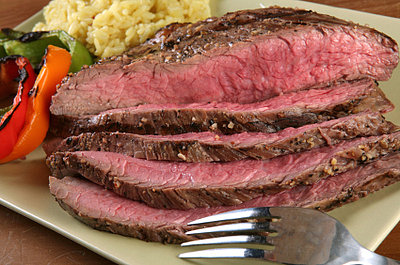
for a step by step, page by page, guide for successfully making your yogurt.
Visit Michael’s Facebook page by CLIKING HERE.
What You’ll Need
Despite the proliferation of yogurt makers on the market, everything you need to make homemade yogurt is probably already in your kitchen, with the possible exception of the thermometer. Specifically, you will need:
1 Half gallon of milk
2-3 Tbs of plain yogurt (as a starter)
1 8-10 Qt stock pot
1 4-5 Qt pot with lid
1 Metal or plastic spoon
1 Dial thermometer with clip
1 Heating pad
Notes:
However much milk you use, is how much yogurt you will make (1/2 gal milk = 1/2 gal yogurt). You can use regular, reduced or no fat milk.
For your first batch, you will need to purchase plain yogurt with active cultures, like Dannon or Stoneyfield (all future batches you will use your own). Alternatively, you may use freeze-dried yogurt starter cultures.
The smaller pot needs to fit inside the larger one, creating a double-boiler, or water jacket effect. It’s not required, but highly recommended.
Your spoon needs to be plastic or metal, so it can be sterilized.
The thermometer you need is just like this one, with a range of at least 100°-185°F, and a clip for your pot’s rim.
You may find alternatives to the heating pad
If you need photos of the process, visit Michael’s website at MakeYourOwnYogurt.com
Create a Water Jacket
While not required, this step will save you time, and ensure consistent results every time out. Further, it prevents you from scalding the milk, which will ruin your yogurt.
Place larger pot in sink
Place smaller pot inside it
Fill larger pot until water line is about half way up the side of smaller pot
Notes:
The smaller pot is going to want to float on you. Hold it down with your hand while filling larger pot with water.
Don’t fill the larger pot more than half way up the side of the smaller pot.
Have your milk and 2-3 Tbs of yogurt out at room temperature throughout the following steps.
If you need photos of the process, visit Michael’s website at MakeYourOwnYogurt.com
Sterilize Equipment
You could probably skip this step, but since you need to bring your water to a boil anyway, it removes any possibility of contamination.
Place your thermometer and spoon in the large pot of water
Place smaller pot upside down over larger pot
Heat water until boiling
Notes:
Once a boil is reached, use oven mitts to remove hot items, and dry with paper toweling.
If you have a set of tongs, use them to quickly sterilize the smaller pot lid by dipping in boiling water.
If you need photos of the process, visit Michael’s website at MakeYourOwnYogurt.com
Add Your Milk
If you do not have a set of pots that fit inside each other, you could heat the milk directly, but you will need to watch it and stir constantly. With the water jacket approach, you simply:
Place the smaller pot into the larger pot of boiling water
Carefully pour your milk into the smaller pot
Clip your thermometer to the rim of the smaller pot
Notes:
The smaller pot is going to want to float when empty, so pour very slowly.
Once all your milk is in, check to see that water level in larger pot and milk level in smaller pot are about the same. Too much water, and the pot will float, too little water, and you won’t heat the milk evenly.
Add or remove water if there is a big discrepancy.
If you need photos of the process, visit Michael’s website at MakeYourOwnYogurt.com
Heat Milk to 185°F
You want the milk to reach 185°F to prepare the milk proteins for yogurt culture production. If you do not have a thermometer, this is also the temperature at which milk begins to froth, like in a latte.
Keep water boiling
Stir frequently
Notes:
If you hold the milk at 185°F for 30 minutes, you will get a very thick consistency.
While you are waiting for the milk to reach 185°F, fill your sink about 1/4 of the way with cold water.
Add some ice to the water.
If you need photos of the process, visit Michael’s website at MakeYourOwnYogurt.com
Cool Milk to 110°F
110°F is the temperature at which the yogurt cultures will consume the lactose in the milk, and reproduce themselves. You could wait for the milk to cool on its own, but this is much faster and more efficient.
Carefully place pot of milk in cold water bath
Stir occasionally
Notes:
Like before, you want the level of cold water in the sink to be about even with the level of milk in the pot.
If you need photos of the process, visit Michael’s website at MakeYourOwnYogurt.com
Pitch Your Yogurt
Pitch simply means to add, and comes from the world of homebrewing. Brewers pitch yeast to make alcohol, you’ll pitch yogurt to make more yogurt!
Pour your 2-3 Tbs of yogurt into your pot of 110°F milk
Notes:
Again, if this is your first batch, use only a good quality plain yogurt with active cultures. All future batches you will make using your own. Alternatively, you may use freeze-dried yogurt starter cultures.
If you need photos of the process, visit Michael’s website at MakeYourOwnYogurt.com
Stir, Cover & Warm
This step requires that the yogurt remain warm, and undisturbed. A heating pad in a quiet corner works best.
Stir milk well to distribute yogurt you just pitched
Cover with lid
Set heating pad to medium and place on a cutting board
Place pot of pitched milk on top
Cover with a dish towel
Notes:
Use the pot of hot water to clean your thermometer, spoon, yogurt dish, and any other dishes that might be around (waste not, want not).
If you need photos of the process, visit Michael’s website at MakeYourOwnYogurt.com
Wait Seven Hours
Now that you have some time on your hands, you might want to know a little bit more about what is going on under the lid of that pot. Feel free to skip this step and come back in seven hours, but it will help you understand what we’ve done so far, and perhaps lead you to improvements or personalized touches for future batches.
What We’ve Done So Far:
Sterilized all of our equipment
Heated milk to 185°F, quickly and evenly by using a hot water jacket
Cooled it quickly and evenly to 110°F, using a cold water bath
Added or “pitched” 2-3 Tbs of fresh yogurt and stirred
Covered and kept warm to wait for seven hours
The reason for sterilization and heating of the milk to 185°F is to remove the possibility of contamination, and to prepare the milk proteins for bacterial reproduction. Doing it quickly and evenly helps achieve predictable results. Cooling the milk to 110°F is required so that the yogurt cultures can work their magic.
Yogurt is created using “helpful” bacteria (usually lactobacillus bulgaricus or streptococcus thermophilus, or both), which cause the milk to ferment. These micro organisms are alive in your yogurt starter that you pitched in the previous step. When they are added to milk at 110°F, they consume the sugar found in milk, called lactose. As a result, the milk thickens or curdles, and lactic acid is produced as a byproduct. The lactic acid gives yogurt its “tangy” taste, and preserves the milk from spoiling. Before pasteurization and refrigeration, this was the only way to make milk last for long periods of time.
The end result is a creamy, tangy, milk-based product, with millions of active bacteria cultures which aid in digestion. Further, the lactic acid allows some people who otherwise cannot tolerate lactose to enjoy this dairy treat. Seven hours at a warm temperature seems to produce a yogurt that is sufficiently thick, and just tangy enough. The longer you let it ferment, the thicker it will get, but the more tangy it will become. Make your first batch at exactly seven hours, and then adjust according to your taste preferences.
If you need photos of the process, visit Michael’s website at MakeYourOwnYogurt.com
Stir Yogurt Well
Now that you have patiently waited seven hours, it is time to see what you have made.
Remove pot from heating pad and uncover yogurt
Use a spatula to see that milk has curdled (see picture)
Stir vigorously to mix curds in with liquid
Notes:
You will notice a pungent, cheesy odor, and maybe even some greenish liquid on top. This is exactly what you want to see.
Really stir it well to distribute the clumpy curds into any remaining liquid.
If you need photos of the process, visit Michael’s website at MakeYourOwnYogurt.com
Pour Yogurt into Containers
You can use any containers that have a proper fitting lid and can accommodate 1/2 gallon, or whatever size batch you are making.
Carefully pour yogurt into container(s)
Cover with tight fitting lid(s)
Notes:
Old yogurt or ricotta cheese containers work very well.
You may notice that your yogurt is thinner than typical store bought yogurt. Store bought yogurts typically use pectin and other thickeners, to make them seem creamier. And, your yogurt is not yet in its finished state.
If you need photos of the process, visit Michael’s website at MakeYourOwnYogurt.com
Chill Yogurt Overnight
Rigorous stirring and then chilling will cause the bacteria in yogurt to stop consuming lactose and producing lactic acid.
Place yogurt in the coldest part of your refrigerator
Wait overnight
Notes:
Yogurt bacteria likes to be kept still and warm. Stirring and chilling causes the thickening and tartening to cease.
The back of your refrigerator is typically the coldest.
If you need photos of the process, visit Michael’s website at MakeYourOwnYogurt.com
Stir & Enjoy Homemade Yogurt
Now it’s time to enjoy the fruit of your labor!
Stir yogurt well & enjoy!
Repeat as necessary
Notes:
Your refrigerated yogurt will be much thicker now. Kept refrigerated, it will last 10 to 14 days.
Your yogurt has no sugar added at all. Mix with fresh fruit, honey, granola, jellies & jams, or however you currently enjoy yogurt.
Enjoy yogurt in some new ways.
Be sure to reserve 2-3 Tbs of your yogurt for you next batch!
If you need photos of the process, visit Michael’s website at MakeYourOwnYogurt.com


